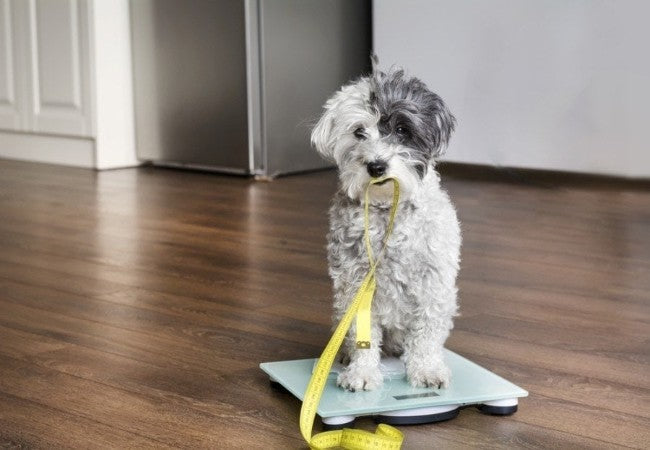Vet Guide to Finding Your Dog’s Body Condition Score: Real Life Weight Check (2025) 🐶⚖️

In this article
Vet Guide to Finding Your Dog’s Body Condition Score: Real Life Weight Check (2025) 🐶⚖️
By Dr. Duncan Houston BVSc
Hi—I’m Dr Duncan Houston BVSc, veterinarian and founder of Ask A Vet. Too many dogs live with hidden weights—either under or overweight—putting them at risk for serious health problems. A Body Condition Score (BCS) is a simple, visual and hands‑on tool to evaluate your dog’s fat coverage and overall fitness. In this vet‑approved guide, we’ll explore common BCS scales, how to assess your dog at home, target weight calculations, and how to support a healthy condition using Ask A Vet.
1. What Is Body Condition Scoring?
BCS is a standardized, semi‑quantitative system vets use to assess your dog’s fat vs muscle balance. The most common scale is 9‑point (1=emaciated to 9=obese), though 5‑point versions exist. Ideal body condition is typically 4–5/9. This method combines visual inspection and palpation over the ribs, waist, and abdominal tuck.
2. How to Assess Your Dog’s Score
- Rib check: Easily feel ribs with light finger pressure; covered by thin fat—but not hidden.
- Waist observation: View from above—should be a noticeable waist behind ribs (hourglass shape).
- Abdominal tuck: Side view should show slight upward tuck behind ribcage.
- Body palpation: Feel ribs, spine, pelvic bones—should be palpable with minimal fat covering or slight cushioning.
BCS Interpretations
- 1–3/9: Underweight—visible bones, no fat, severe tuck.
- 4–5/9: Ideal—ribs easily felt, waist definable, slight abdominal tuck.
- 6–7/9: Overweight—fat covering ribs, waist less pronounced.
- 8–9/9: Obese—ribs hard to feel, no waist or tuck, fat over spine/abdomen.
3. Why BCS Matters More Than Scale Weight
Breed and size cause major weight variations—Greyhounds and Bulldogs can both weigh 60 lb but look very different. BCS combines shape + feel to assess health risks better than blind weight numbers.
- Underweight dogs are prone to nutrient deficiency, weakened immunity, and frailty.
- Overweight/obese dogs face elevated risks: diabetes, joint disease, heart conditions, shortened lifespan.
- Dogs at ideal BCS live ~2 years longer than obese peers (Purina study).
4. Setting and Achieving a Target Weight
Use this formula to calculate your dog’s optimal weight:
- Subtract 5 from BCS, multiply result ×10, add 100, then divide 100 by that number.
- Multiply that ratio by current body weight (in pounds).
Example: BCS = 9 → (9–5)=4 → 4×10=40 → 100/140≈0.714 → target weight = 0.714×50 lb ≈ 35.7 lb.
Talk to your vet or use Ask A Vet telehealth to set milestones and adjust feeding.
5. Creating a Weight Management Plan
- 📅 Monthly tracking: Weigh your dog and reassess BCS—adjust plan as needed.
- 🥗 Calorie control: Reduce daily calorie intake based on target weight.
- 💪 Exercise increase: Walks, play, fetch—all boost burn and wellness.
- 🛠️ Enrichment tools:
- Ask A Vet App: Medical review, log feeding, troubleshoot stalls.
6. Underweight? What to Do
- 🔼 Increase 10–20 % calorie intake temporarily.
- Switch to a high-calorie, digestible diet under vet guidance.
- 📲 Use Ask A Vet to check for illnesses like parasites or GI disease.
- 🏥 Consider blood tests for underlying conditions if weight loss continues.
7. Real Dog Case Study
Case: “Bella”, a 7-year-old Golden Retriever
Bella’s owner noted she couldn’t feel ribs and had lost noticeable waist. A BCS of 7/9—target weight dropped from 80 lb to ~65 lb. With portion-controlled food, daily walks, and Woopf enrichment, Bella reached a 5/9 BCS in 4 months. Ask A Vet follow-ups helped tweak her diet and catch early arthritis signs. She’s now leaner, energized, and healthier.
8. FAQs & Troubleshooting
-
My dog has long fur—how do I score?
Focus on touch: ribs and waist feel rather than look. -
How often should BCS?
Every 4–6 weeks for weight loss, quarterly once the ideal condition is achieved. -
My dog isn’t losing weight—why?
Check caloric intake (including treats/snacks), exercise levels, and possible medical issues—Ask A Vet for help. -
Is it too late for my senior dog?
Never maintaining ideal BCS supports mobility, chronic disease control, and longevity at any life stage.
📌 Final Thoughts from a Vet
BCS is a powerful, easy tool to protect your dog’s health through weight management. It guides decisions more accurately than scale alone. Regular assessments, realistic targets, mindful feeding, and enrichment all support a fit, vibrant life. Tools like Ask A Vet telehealth, supportive approach to maintaining ideal body condition. Start scoring today and give your dog the gift of optimal health in 2025. 🐾❤️






